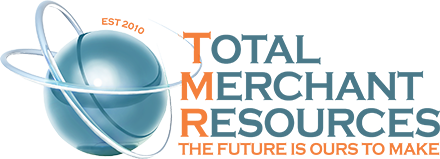
Leasing equipment can be a smart way to access the tools we need without spending a lot of money upfront. Whether our business needs machinery, computers, or vehicles, leasing provides flexibility and helps us manage our cash flow better. In 2024, more businesses are realizing the benefits of leasing over buying.
Benefits of Equipment Leasing
Leasing equipment for our business offers several significant advantages that help us save money and stay flexible. One of the main benefits is the lower upfront cost. Instead of paying a large sum of money to purchase equipment outright, we can spread the payments out over time. This allows us to conserve cash for other immediate needs like payroll, marketing, or inventory.
Another benefit is the ability to stay up-to-date with the latest technology. Equipment, especially in industries such as healthcare and IT, can become outdated quickly. Leasing provides an option to upgrade to newer models at the end of the lease term. This ensures that we always have access to the best and most efficient tools without the hassle and cost of frequent purchases.
Leasing can also offer tax benefits. Lease payments are typically considered operating expenses and can be deducted from our taxable income. This reduction in taxable income can result in significant savings over the term of the lease.
Lastly, leasing provides greater flexibility. Many leasing agreements come with options to buy the equipment at the end of the term, continue leasing, or return it. This flexibility allows us to make decisions based on our current financial situation and future business needs.
Steps to Getting Started with Equipment Leasing
Getting started with equipment leasing involves a few straightforward steps. By following these steps, we can ensure a smooth and successful leasing experience.
- Assess Your Needs: Before we begin, it’s crucial to assess what equipment we need. Identify the tools that will most benefit our operations and determine the specifications and features required.
- Research Leasing Companies: Not all leasing companies are the same. We should conduct thorough research to find reputable leasing companies that offer favorable terms. Reading reviews and seeking recommendations can help narrow down the options.
- Gather Financial Information: Leasing companies will require financial information to assess our eligibility. This includes income statements, balance sheets, and potentially credit scores. Having these documents ready will streamline the application process.
- Request Quotes and Compare: It’s wise to request quotes from multiple leasing companies. Compare the terms, interest rates, and total costs. This comparison will help us find the most cost-effective and suitable lease agreement.
- Read the Fine Print: Carefully review the lease agreement, including any terms and conditions. Pay attention to details such as maintenance responsibilities, early termination fees, and end-of-lease options.
- Complete the Application: Once we’ve chosen a leasing company and are happy with the terms, we can complete the application process. This typically involves submitting our financial information and signing the lease agreement.
By following these steps, we can secure the equipment we need to enhance our operations without breaking the bank. This methodical approach will ensure that we make informed decisions and choose the best leasing options for our business.
How to Negotiate Lease Terms
Negotiating lease terms can help us get the best deal and make sure that the lease aligns with our business needs. Here are some key points to consider when negotiating:
- Lease Duration: The length of the lease term can impact our monthly payments and overall flexibility. We should evaluate our projected business growth and choose a term that provides the right balance between cost and flexibility.
- Payment Schedule: Some leases offer flexible payment schedules, such as monthly, quarterly, or even seasonal payments. We should discuss these options with the leasing company to find a payment plan that works best for our cash flow.
- Maintenance and Repairs: Clarify who is responsible for maintenance and repairs. Some leasing agreements include maintenance services, while others may require us to cover these costs. Understanding these responsibilities can prevent unexpected expenses.
- End-of-Lease Options: Explore the options at the end of the lease term. Many leases offer the choice to purchase the equipment, renew the lease, or return the equipment. We should negotiate terms that give us flexibility based on our future needs.
- Upgrades and Early Termination: If we anticipate needing to upgrade equipment or terminate the lease early, we should negotiate terms that accommodate these possibilities. Discuss potential fees and conditions for early termination or upgrades.
- Hidden Fees: Be aware of any hidden fees, such as administrative fees or additional charges for exceeding usage limits. We should request a detailed breakdown of all costs involved to avoid surprises.
By focusing on these points, we can negotiate lease terms that provide the best value for our business, ensuring that we enter into an agreement that supports our financial goals.
Tips for Saving Money on Equipment Leasing
Leasing equipment is a great way to save money, but there are additional strategies that can help us maximize our savings. Here are some practical tips:
- Shop Around: Don’t settle for the first leasing company we find. By obtaining quotes from multiple providers, we can compare rates and terms to find the most competitive offer.
- Consider Used Equipment: Leasing used or refurbished equipment can be significantly cheaper than leasing new. Many leasing companies offer high-quality, pre-owned equipment that can meet our needs at a lower cost.
- Negotiate Terms: As mentioned earlier, negotiating lease terms can lead to better deals. We should negotiate not just the monthly payment but also other aspects like maintenance responsibilities and end-of-lease options.
- Bundle Services: Some leasing companies offer discounts if we lease multiple pieces of equipment or bundle services like maintenance and insurance. Bundling can lead to significant savings.
- Monitor Usage: Keeping track of our equipment usage can prevent us from exceeding usage limits and incurring additional fees. Understanding how we utilize the equipment can help us choose the most cost-effective lease agreement.
- Tax Benefits: Take advantage of tax deductions for leased equipment. Lease payments are generally treated as operating expenses and can be deducted from our taxable income.
By implementing these tips, we can make the most of equipment leasing and keep our operating costs low. Thoughtful planning and smart decision-making can lead to significant savings for our business.
Conclusion
Leasing equipment offers many benefits, from lower upfront costs to staying current with the latest technology. By understanding the steps to get started and knowing how to negotiate lease terms, we can make informed decisions that align with our business goals. Additionally, practical tips for saving money on leasing can help us manage expenses and achieve financial stability.
At Total Merchant Resources, we understand the importance of making smart financial decisions for your business. If you’re looking to lease equipment without breaking the bank, our team is here to support you. Explore your options and discover how we can help you secure the equipment you need to grow your business. Contact us today to get started!



